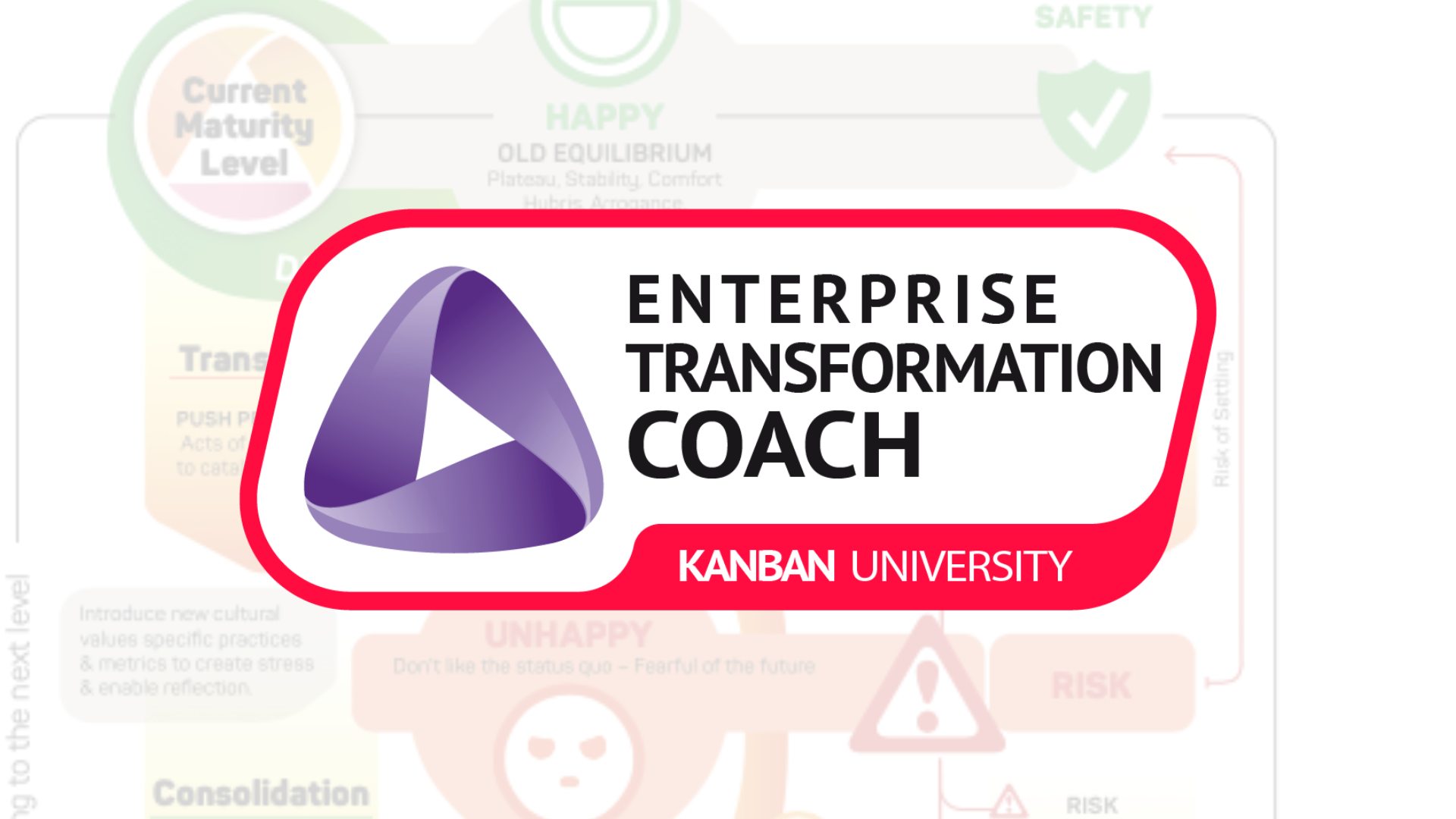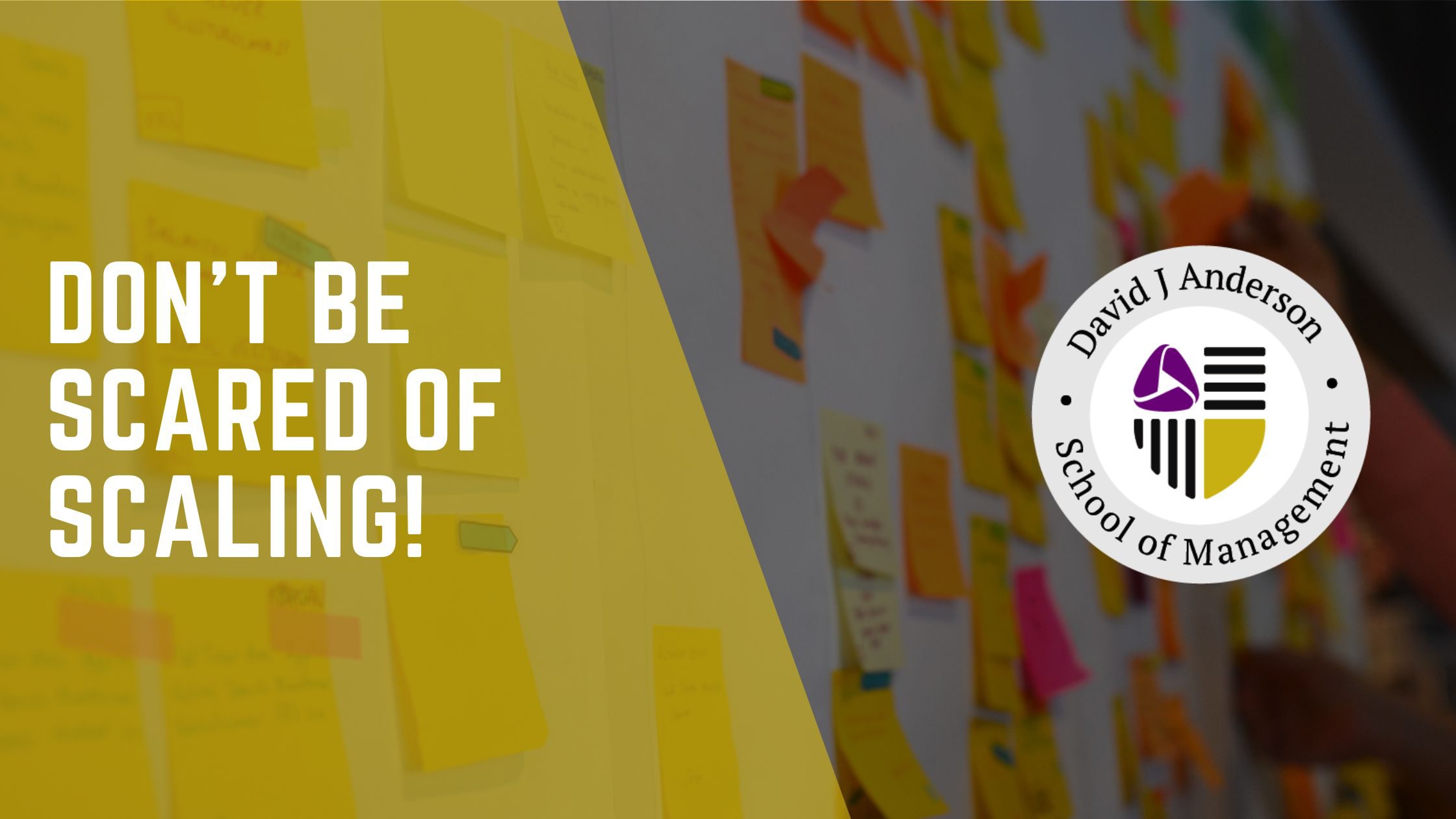Make the 4-Day Work Week Work: Part 2
Service Oriented Organization
In the second article from the series, we are revisiting David Anderson’s blogpost Leading during a Time of Quarantine: The Service-oriented Organization (SOO).
As mentioned in a previous article, the post-pandemic world where the idea of 4-day workweek emerges rapidly requires leaders to shift from leadership by identity towards leadership by purpose.
What matters more, is “why” we are involved, than the “who” we are part of.
If we say that in this new organization each individual is a service and we need to organize our business as a network of services, it’s worth starting with understanding what service is.
To do that, let’s first examine the Kanban Service Delivery Principles.
Service Delivery Principles
Kanban encourages you to take a service-oriented approach to understand your organization and how the work flows through it. This service-oriented organizational paradigm is based on the idea that your organization is an organic entity consisting of a network of services, each of them living and breathing, and evolving. Customer requests flow through this network of services. If we are to improve service delivery, improvements should be guided by a set of principles. These principles may not be utilized early on by organizations as they may not have developed or evolved a service-oriented or customer service mindset as part of their culture.
The service-oriented principles are:
- Understand and focus on customer needs and expectations
- Manage the work; let people self-organize around it
- Regularly review the network of services and its policies to improve outcomes
Understand and focus on customer needs and expectations
The customers are at the heart of our process. They bring requests, which we fulfill through the set of service delivery activities until the service or products are considered as completed and satisfying customer needs.
Hence, it is important to not lose the track of the customer requirements for our service and and keep communications and dialogue open. Delivery teams but also discovery teams shouldn’t be just order takers. They need to look proactively for understanding the customer’s purpose and satisfying it.

Manage the work; let people self-organize around it
It may be sometimes just a change of wording used, but it is important to focus in work and discussion on the process itself and not on the people doing it. E.g., when a defect was detected, you do not look for an individual to blame. Rather you ask the questions:
- Why did it happen?
- What did really happen?
- What was the impact?
- What can we do to avoid it in a future?
Although Kanban may seem very dehumanized by focusing on the process and not people, this principle makes it even more human-centric: in Kanban, we give people space by removing the burden of constant focus on their actions, sometimes the burden of micromanagement and finger-pointing. We trust that experts, who we hired, are capable and knowledgeable enough to perform their duties and we switch our focus to improving the process instead.
Regularly review the network of services and its policies to improve outcomes
We are not isolated islands. In most of the cases we work with other people, and we are dependent on them – or they are dependent on us. There is a network (a web) of correlations between different services, which can be managed by establishing feedback mechanisms in the form of regular cadences.
This network of services in your organization requires regular review altogether with accompanying policies to make sure they reflect reality.
The future of the organization is service-oriented!
In these times of unprecedented change organizations are having to move more quickly, take faster decisive action, reorient and reinvent themselves for survival. More than ever businesses are discovering their need for agility and innovation because of this increase in pace, to keep up and stay ahead.
Crisis situations give many people the opportunity to shine, to show their leadership and express skills, capabilities and behaviors that were never in their job descriptions. Companies are discovering their real leaders.
While leadership and innovation are admirable and required qualities in a crisis, they count for little without an ability to execute.
Organizational management skills are needed now more than ever in our lifetime. In a work from home (WFH) world, we’re discovering that:
- The networks built upon the tribalism will not strive.
- We should lead by communicating shared purpose.
- Each employee at home has become a service provider.
In a world shaken by crisis, where there is likely no return to the old ways, the future of the organization is service-oriented.
A precedent: Feature-Driven Development (FDD)
In the field of large-scale business agility, it turns out there is already an archetypal example of a dynamically reconfigurable organization, designed to rapidly respond to emerging demands and uncertain requirements. Built by Jeff de Luca, a director of IT at United Overseas Bank in Singapore in 1997, his organization reinvented the bank’s lending system. Their doctrine was named “Feature-driven development” (or FDD). We can learn a lot about the future of organizational design from a project of 50 plus people, more than 20 years ago.
In 1997, we lacked the language of service-orientation with which to describe the processes and organization on the PowerLender IT project at UOB. Every programmer, every business analyst, several other specialists such as user experience designers, and a team of testers all provided services which were dynamically orchestrated feature by feature over 2 years to completely replace all the bank’s lending operations with a single integrated IT platform.

Domain model showing class owners
It all started with a map of the territory, a model of the lending domain and the system requirements. The map was then carved up with different sections of the code allocated to programmers as “class owners.” The concept was simple and intended to maintain code quality and design integrity. Each “owner” would deeply comprehend and understand what that section of code should do, and they would ensure, the proper “coupling” and “cohesion” (technical terms in software engineering) to ensure design integrity and long-term maintainability of the system architecture and code function.
FDD made a trade-off that was unfashionable amongst programming methodologists – it traded flexibility of the workforce, for internal code quality. Unlike, Extreme Programming (XP) which was also coming into fashion at the time, FDD gave ownership of sections of the code to individuals. In Jeff de Luca’s world it was considered easier to coordinate people than to maintain the quality and integrity of the code.
XP took the opposite view, let the people have the freedom to roam the entire codebase. This created flexibility amongst the workers to take any new request that came along. They could move quickly. Collocate the team for easier communication.
Instead FDD used the domain model to facilitate communication. XP assumed that code quality was easy and coordination of humans to work together was challenging. While the XP approach came to dominate the IT world in the past 20 years, through its more corporate mutation of Test-driven Development (TDD), there remains plenty of evidence that code quality is not easily maintained, and design and architectural integrity remain challenging for programmers the world over.
In FDD every programmer provides a set of design, coding, and unit testing services, for their territory within the overall map of the system and its business domain. Every analyst provides a feature-oriented requirements explanation and elaboration service, and every tester, a feature-oriented integration testing service. Specialist dependent services such as system architecture, data-base administration and user experience design are called upon when required.
The entire project is viewed as a large collection of features for delivery.
The term “chief programmer” was used in the FDD literature to describe someone who was responsible and accountable for the design, development, testing, and delivery of a given feature. Today we might better use the language of service provision and call that person a Feature Delivery Manager (FDM) where the service provided is a Feature Delivery Service. An FDM would use their knowledge and experience to quickly assemble the team required – essentially orchestrating the set of service providers needed to cooperate and collaborate to complete the needed work.
The feature: its requirements, its user expectations, and delivery criteria defined the shared purpose for a “feature team” – an orchestrated set of service providers who collaborate to make it. While the greater grand vision and mission of the project, to integrate the consumer, commercial and corporate lending systems enabling UOB to make faster, better lending decisions, to be a more agile bank, gave the entire project team of more than 50 staff a shared purpose to drive alignment, trust, pride, achievement, and collaboration.
Individuals working from home must have clearly defined service interfaces. There must be no role ambiguity. People want to know what is expected of them and how to perform against expectations.
Everyone wants respect, status, recognition, and dignity in their work. The foundation of happiness in the workplace is a set of unambiguous well-defined service definitions. And in this new WFH world, we need these service definitions at the granularity of individual workers. While this sounds onerous and cumbersome, it need not be. FDD has shown us that it is perfectly possible to have large-scale business agility enabled by a set of (micro-) services performed by individuals. What is needed is a map of the territory and a set of cleanly defined service interfaces for every provider in the network.
Reinvent your workplace as a service-oriented organization (SOO)
Rapid reinvention, true business agility and the resilience to cope gracefully with unfolding events and emergent conditions, comes from a flat, service-oriented organizational structure. Managers must develop the skills to quickly orchestrate sets of services to deliver any and every request. They must lead by communicating purpose and context to align sets of service providers asked to cooperate and collaborate at a moment’s notice and for the briefest of time.
If you want to relieve your people of endless tiresome hours of video conferencing from their homes, the nature of work must change.
Rapidly reinvent your workplace as a service-oriented organization (SOO) with managers who orchestrate sets of service providers to deliver customer-valued work.
Do not try to bend the old ways of leading and working to the new reality. In this new world of distributed, 4-days, remote working, it matters more, “why” we are involved, than the “who” we are part of.





